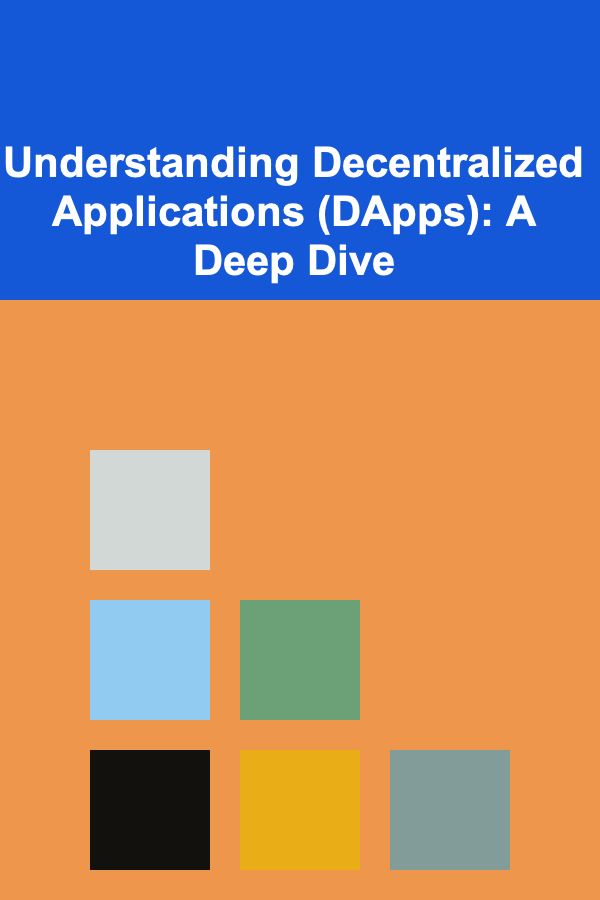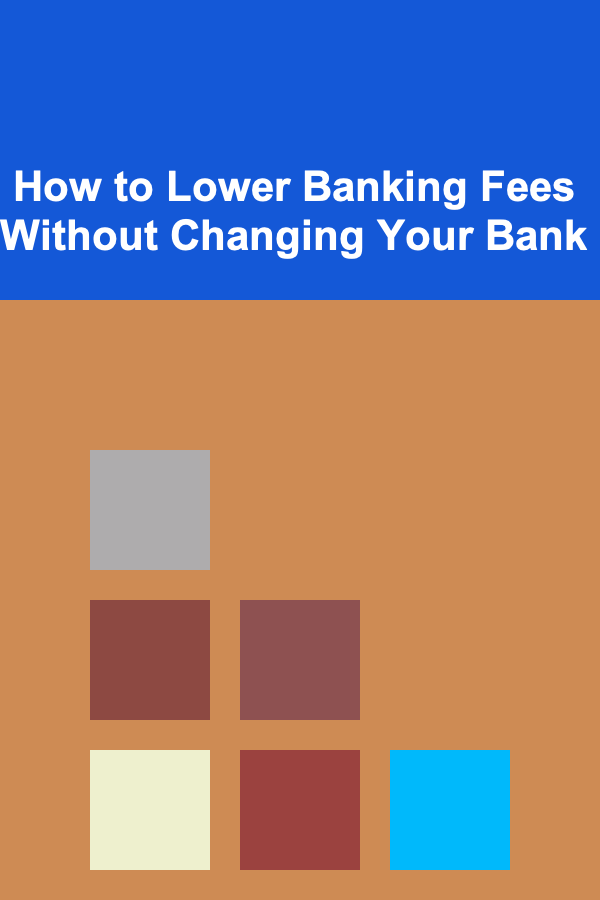
Understanding Decentralized Applications (DApps): A Deep Dive
ebook include PDF & Audio bundle (Micro Guide)
$12.99$9.99
Limited Time Offer! Order within the next:

Decentralized Applications, or DApps, are rapidly changing the landscape of software development and application deployment. They represent a fundamental shift from traditional, centralized applications by leveraging the power of blockchain technology and distributed ledgers. This article aims to provide a comprehensive understanding of DApps, covering their core principles, architecture, benefits, challenges, and future prospects. We'll explore the key components that make DApps unique and discuss the practical considerations involved in building and using them.
What are Decentralized Applications (DApps)?
At their core, DApps are applications that run on a decentralized network, primarily a blockchain. Unlike traditional applications that rely on a central server or authority, DApps operate on a peer-to-peer network, distributing data and processing power across multiple nodes. This decentralization is the defining characteristic of DApps and provides several significant advantages.
To fully grasp what DApps are, it's crucial to understand the difference between centralized, decentralized, and distributed systems:
- Centralized Systems: In a centralized system, a single entity controls all the data and processing power. A typical example is a traditional web application where a central server manages user data, application logic, and databases.
- Decentralized Systems: Decentralized systems distribute control across multiple nodes, reducing the risk of a single point of failure. However, decision-making and authority might still be concentrated among a smaller group of participants. Think of a consortium blockchain where a few organizations collectively manage the network.
- Distributed Systems: Distributed systems are spread across many nodes, with no central authority. Data and processing are distributed across the entire network, making it highly resilient and fault-tolerant. Public blockchains like Ethereum are examples of distributed systems underlying DApps.
DApps build upon the foundation of distributed systems by incorporating blockchain technology to ensure transparency, immutability, and security. They combine the front-end user interface (UI) of a traditional application with the decentralized back-end logic powered by smart contracts.
Key Characteristics of DApps
Several key characteristics distinguish DApps from traditional applications:
- Open Source: The code that powers DApps is typically open source, meaning it is publicly available for anyone to inspect, modify, and contribute to. This transparency fosters trust and allows the community to verify the application's functionality and security.
- Decentralized: DApps operate on a decentralized network, distributing data and processing power across multiple nodes. This eliminates the single point of failure inherent in centralized systems and makes the application more resilient to censorship and attacks.
- Cryptographic Security: DApps leverage cryptographic techniques to secure data and transactions. Blockchain technology ensures that data is tamper-proof and that transactions are verified and recorded in a transparent and immutable manner.
- Autonomous: DApps often operate autonomously, relying on smart contracts to execute predefined rules and logic without human intervention. This automation reduces the need for intermediaries and increases efficiency.
- Tokenized Incentives: Many DApps utilize tokens to incentivize participation and reward users for contributing to the network. These tokens can be used to access services within the DApp, vote on governance proposals, or earn rewards for providing resources or services.
The Architecture of a DApp
Understanding the architecture of a DApp is crucial to comprehending how it functions. A typical DApp consists of the following components:
- Front-End Interface: This is the user interface (UI) that users interact with. It's typically built using web technologies like HTML, CSS, and JavaScript, and it allows users to access the DApp's functionalities and interact with the underlying blockchain. The front-end communicates with the back-end through APIs and libraries.
- Smart Contracts: Smart contracts are self-executing contracts written in code that define the rules and logic of the DApp. They are deployed on the blockchain and automatically execute when specific conditions are met. Smart contracts are the backbone of DApps, enabling them to perform actions and manage data in a decentralized and trustless manner. Languages like Solidity (for Ethereum) and Rust (for Solana) are commonly used to write smart contracts.
- Blockchain: The blockchain is the underlying decentralized database that stores the DApp's data and smart contracts. It provides a secure, transparent, and immutable record of all transactions and interactions within the DApp. Different blockchains have different characteristics, such as transaction speed, scalability, and consensus mechanisms. Ethereum, Solana, and Polkadot are popular blockchain platforms for DApp development.
- Decentralized Storage (Optional): Some DApps require decentralized storage solutions to store large amounts of data that cannot be efficiently stored on the blockchain. Services like IPFS (InterPlanetary File System) and Arweave provide decentralized storage options that ensure data is accessible, resilient, and censorship-resistant.
- Oracles (Optional): Oracles are third-party services that provide real-world data to smart contracts. Since blockchains cannot directly access external data, oracles are needed to bridge the gap between the blockchain and the outside world. For example, an oracle might provide price feeds for a decentralized finance (DeFi) application.
Example: A Simple Decentralized Voting Application
Let's illustrate the DApp architecture with a simple example: a decentralized voting application.
- Front-End: The front-end allows users to register to vote and cast their votes for different candidates. It interacts with the smart contract to submit votes and display the current vote count.
- Smart Contract: The smart contract manages the voting process. It registers voters, records votes, and calculates the final results. It ensures that each voter can only vote once and that the voting process is transparent and tamper-proof.
- Blockchain: The blockchain stores the smart contract code, voter registrations, and vote records. All data is immutably recorded on the blockchain, ensuring the integrity of the voting process.
Benefits of Using DApps
DApps offer several advantages over traditional applications:
- Increased Transparency: The open-source nature of DApps and the immutability of the blockchain ensure that all data and transactions are transparent and verifiable. This fosters trust and accountability among users.
- Enhanced Security: Decentralization and cryptographic security make DApps more resistant to censorship, attacks, and data breaches. The distribution of data across multiple nodes eliminates the single point of failure inherent in centralized systems.
- Greater User Control: DApps give users more control over their data and privacy. Users are not reliant on a central authority to manage their information, and they have the ability to control how their data is used.
- Reduced Intermediaries: DApps can eliminate the need for intermediaries, such as banks and payment processors, in various transactions and processes. This can lead to lower fees, faster transactions, and increased efficiency.
- Innovation and New Business Models: DApps enable the creation of new and innovative business models that were not possible with traditional applications. Examples include decentralized finance (DeFi), non-fungible tokens (NFTs), and decentralized autonomous organizations (DAOs).
Challenges of DApp Development
Despite their many benefits, DApps also face several challenges:
- Scalability: Blockchain scalability is a significant challenge for DApps. Many blockchains, such as Ethereum, have limited transaction throughput, which can lead to slow transaction times and high fees, especially during periods of high demand. Solutions like layer-2 scaling solutions (e.g., Optimism, Arbitrum) and alternative blockchains (e.g., Solana, Avalanche) are being developed to address this issue.
- Complexity: Developing DApps can be complex and requires specialized skills in blockchain technology, smart contract programming, and decentralized architecture. The learning curve can be steep, and developers need to be aware of potential security vulnerabilities and best practices.
- Security: Smart contract security is a critical concern. Smart contracts are immutable once deployed, so any vulnerabilities can be exploited by attackers. Thorough testing, auditing, and formal verification are essential to ensure the security of DApps.
- User Experience: User experience (UX) can be a barrier to adoption for DApps. Many DApps have complex interfaces and require users to understand blockchain concepts, such as gas fees and private keys. Improving the UX is crucial to making DApps more accessible and user-friendly.
- Regulation: The regulatory landscape for DApps is still evolving. Governments and regulatory bodies are grappling with how to regulate DApps and blockchain technology, and there is uncertainty about the legal and compliance requirements for DApps.
Popular DApp Platforms
Several blockchain platforms support DApp development, each with its own strengths and weaknesses:
- Ethereum: Ethereum is the most popular platform for DApp development. It has a large and active developer community, a wide range of tools and resources, and a well-established ecosystem of DApps. Ethereum uses Solidity as its primary smart contract language and has a robust virtual machine (EVM) for executing smart contracts.
- Solana: Solana is a high-performance blockchain platform that offers fast transaction speeds and low fees. It is designed to address the scalability challenges of Ethereum and other blockchain platforms. Solana uses Rust as its primary smart contract language and has a unique consensus mechanism called Proof of History (PoH).
- Polkadot: Polkadot is a multi-chain platform that allows different blockchains to interoperate and share data. It is designed to support a wide range of DApps and use cases. Polkadot uses Substrate, a modular framework for building custom blockchains, and allows developers to create parachains that connect to the Polkadot relay chain.
- Binance Smart Chain (BSC): BSC is a blockchain platform that is compatible with Ethereum and offers fast transaction speeds and low fees. It is designed to support DeFi applications and has a growing ecosystem of DApps. BSC uses Solidity as its smart contract language and is compatible with Ethereum's EVM.
- EOSIO: EOSIO is a blockchain platform that offers high transaction throughput and scalability. It uses a delegated proof-of-stake (DPoS) consensus mechanism and supports smart contract development using C++.
Examples of DApps
DApps are being used in a wide range of industries and applications:
- Decentralized Finance (DeFi): DeFi DApps offer a range of financial services, such as lending, borrowing, trading, and yield farming, without the need for traditional intermediaries. Examples include Uniswap, Aave, and Compound.
- Non-Fungible Tokens (NFTs): NFT DApps allow users to create, buy, and sell unique digital assets, such as artwork, collectibles, and virtual real estate. Examples include OpenSea, Rarible, and SuperRare.
- Decentralized Social Media: Decentralized social media DApps offer a censorship-resistant alternative to traditional social media platforms. Examples include Mastodon (technically federated, a step towards decentralization), Minds, and Peepeth (now defunct, but a pioneering example).
- Decentralized Gaming: Decentralized gaming DApps allow users to own and trade in-game assets, participate in decentralized governance, and earn rewards for playing. Examples include Axie Infinity, Decentraland, and The Sandbox.
- Decentralized Identity: Decentralized identity DApps allow users to control their digital identity and data without relying on a central authority. Examples include Civic and uPort.
- Supply Chain Management: DApps are used to track and trace products throughout the supply chain, ensuring transparency, authenticity, and efficiency.
Building a DApp: A Simplified Overview
Building a DApp involves several steps:
- Choose a Blockchain Platform: Select the blockchain platform that best suits your DApp's requirements, considering factors such as scalability, cost, security, and developer tools.
- Design the Smart Contract: Design the smart contract logic that will govern the DApp's functionality. Define the data structures, functions, and rules that will be encoded in the smart contract.
- Write the Smart Contract: Write the smart contract code using a smart contract language, such as Solidity (for Ethereum) or Rust (for Solana). Ensure that the code is secure, efficient, and well-documented.
- Test the Smart Contract: Thoroughly test the smart contract using testing frameworks and tools. Simulate different scenarios and edge cases to identify potential vulnerabilities and bugs.
- Deploy the Smart Contract: Deploy the smart contract to the chosen blockchain platform. This will make the smart contract available for use by the DApp and other applications.
- Develop the Front-End Interface: Develop the front-end interface that users will interact with. Use web technologies like HTML, CSS, and JavaScript to create a user-friendly and intuitive interface.
- Connect the Front-End to the Smart Contract: Connect the front-end interface to the smart contract using APIs and libraries. This will allow users to interact with the smart contract and access the DApp's functionalities.
- Deploy the DApp: Deploy the DApp to a web server or decentralized hosting platform. This will make the DApp accessible to users.
Tools and Technologies for DApp Development
- Truffle Suite: A development environment, testing framework, and asset pipeline for Ethereum.
- Remix IDE: An online IDE for writing, compiling, and deploying Solidity smart contracts.
- Ganache: A personal Ethereum blockchain for testing DApps.
- Web3.js: A JavaScript library for interacting with Ethereum nodes.
- Ethers.js: A JavaScript library for interacting with Ethereum nodes. Offers similar functionality to Web3.js with different design choices.
- Solana CLI: A command-line interface for interacting with the Solana blockchain.
- Anchor: A framework for building secure Solana programs (smart contracts).
The Future of DApps
DApps have the potential to revolutionize many industries and applications. As blockchain technology matures and becomes more scalable, we can expect to see even more innovative and impactful DApps emerge. Key areas of future development include:
- Improved Scalability: Ongoing efforts to improve blockchain scalability will make DApps more efficient and accessible to a wider audience.
- Enhanced Interoperability: Interoperability between different blockchains will allow DApps to access data and functionalities from multiple platforms, creating more versatile and powerful applications.
- Greater User Adoption: As the user experience of DApps improves and blockchain technology becomes more mainstream, we can expect to see greater user adoption and acceptance of DApps.
- Increased Regulatory Clarity: As governments and regulatory bodies provide more clarity on the legal and compliance requirements for DApps, the industry will be able to grow and innovate with greater confidence.
- Integration with Emerging Technologies: DApps will increasingly integrate with other emerging technologies, such as artificial intelligence (AI), the Internet of Things (IoT), and virtual reality (VR), to create even more innovative and compelling applications.
In conclusion, Decentralized Applications represent a paradigm shift in software development. By leveraging the power of blockchain technology, DApps offer increased transparency, enhanced security, and greater user control. While challenges remain, the potential benefits of DApps are significant, and we can expect to see them play an increasingly important role in the future of technology.

How Cutting Down on Personal Care Services Can Save You Money and Time
Read More
How to Choose the Best Pet Bed for Your Furry Friend
Read More
How to Decorate Your Bathroom Without Spending a Fortune
Read More
How to Lower Banking Fees Without Changing Your Bank
Read More
How to Track and Submit Your College Application Status: An Actionable Guide
Read More
How To Protect Your Brain from Age-Related Decline
Read MoreOther Products

How Cutting Down on Personal Care Services Can Save You Money and Time
Read More
How to Choose the Best Pet Bed for Your Furry Friend
Read More
How to Decorate Your Bathroom Without Spending a Fortune
Read More
How to Lower Banking Fees Without Changing Your Bank
Read More
How to Track and Submit Your College Application Status: An Actionable Guide
Read More